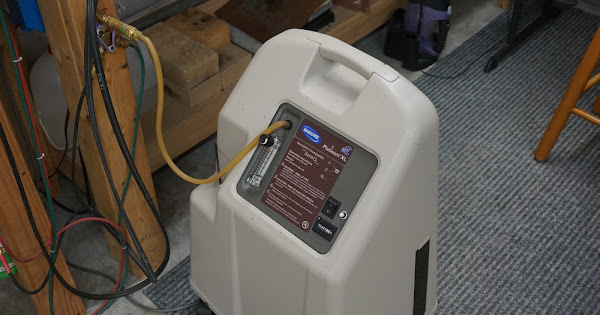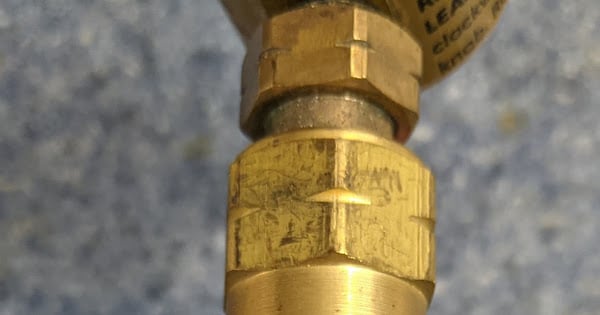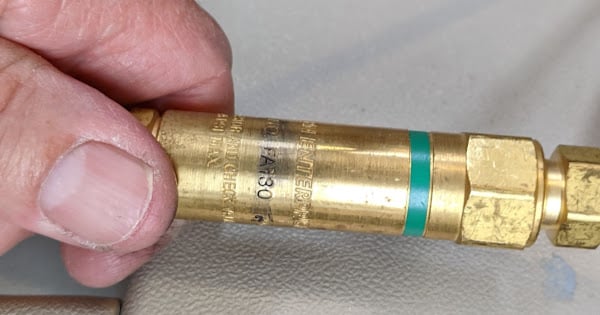Paige Tools wants to thank Judy, Rob, & others, who have answered questions about the Little Torch, Meco Midget & Hoke using propane & natural gas. Thanks also to Judy, & Rob, for their remarks about our Tip products! With all the Forum discussions recently about Disposable vs. Refillable cylinders & Tanks, Torches, Oxygen Concentrators, Regulators & Arrestors we’d like to add some thoughts on those subjects too. We hope summarizing often asked questions can add additional perspective plus provide information to benefit Torch users.
For typical jewelry makers working in precious metals a Soldering Torch is the most important tool used. Putting together a suitable soldering setup takes a lot of though about different issues. Equipment needs, costs, fuel gas & oxygen options as well as studio placement plus ancillary matters like municipal regulations, insurance questions and ease of adapting a setup, if needed, for additional uses as jewelry skills develop or areas of interest change. These all come into play when setting up a Torch system.
The Little Torch, Meco Midget, Gentec Small Torch & Hoke are well known Brand names for ‘2-gas,’ small, hand Torches commonly used for silver, gold & platinum ‘bench work’. (2-gas refers to fuel gas + pure oxygen vs. fuel gas & air Torch). Paige Tools supports the above Torches except the Hoke, which we discontinued supporting to focus our product line on the other Torches mentioned above.
When considering the Torch you’ll use… Torch Brand vs. jewelry quality made are Not related.
Ease of Torch use is #1: How does a Torch fit in your hand? Can you adjust the gas valves with the hand holding the Torch? Are gas lines, connectors or clamps needed? Is a Torch Holder available? Plus of course cost. Torch cost or construction quality is also not related to jewelry quality. Skills of the jewelry maker are what count.
Propane, Natural Gas (& Butane) are often referred to as ‘Alternative’ Fuel gasses… alternative to Acetylene. For precious metal work, brass & copper too, Propane or Natural Gas are the Best Choices. Clean burning fuel gasses with good heat output. (In the US Butane is primarily used in products like lighters, kitchen Torches, aerosol propellants, refrigerants, etc.). Natural gas has some Torch limitations. Judy, made a related & important comment re: the Meco Midget & Natural Gas… read below.
Natural gas is commonly supplied to US residences at very low pressure, around ¼ PSI. The Meco will operate at that low pressure as Judy, mentioned. The Little Torch & Gentec Small Torch will not. Smith Products, maker of the Little Torch, states the Little Torch needs a minimum of 1 PSI on natural gas to operate. A natural gas pressure Booster is needed to increase the low, residential delivery pressure. A Booster increases the low gas pressure to about 25 PSI. Another benefit of the Booster allows using of a traditional Regulator + an Arrestor on the natural gas line.The Regulator allows adjusting the 25 PSI Booster output down to a pressure the Torch Tips need. More on Arrestors below.
Acetylene: Paige Tools does not make products for acetylene but some very talented jewelry makers, schools & art centers do use this gas for various reasons, even though other fuel gas options bring more benefits. A couple safety facts re: acetylene.
Flammability:
Acetylene will ignite at concentrations from 2.5 percent to 82 percent in air. Propane from 2.1 percent to 9.5 percent in air. Based on these numbers propane is much safer than acetylene because of its narrow flammability range.
15 PSI warning about Acetylene:
Free, gaseous acetylene can become unstable at output pressures above 15 PSIG and can decompose with explosive force. (PSIG means Regulator Ggauge PSI) Acetylene Regulators are designed to limit output pressure to 15 PSIG when correctly working. Maintaining equipment is very important.
Torch Tips: The Fuel Gas used is the Single Factor governing the basic Tip design to use. Single Orifice Tips commonly supplied with most Torches are the basic design when using Acetylene & Hydrogen. Single orifice Tips will ‘light a flame’ with any fuel gas but to take advantage of the Benefits of all Alternative fuel gasses, mentioned above, a Multi-Port Tip design is Required. Paige special, Multi-Port Tips are designed Only to be used with the Alternative fuel gasses Propane, Natural Gas & Butane. Never Acetylene or MAPP gas. ‘Needle’ Tips are also single orifice Tips!
Take-away: Alternative Fuel gasses Require a Multi-Port Tip to optimize flame stability & flame heat properties.
Disposable Propane Cylinders: Many people use them. Low cost & easy to obtain. Great for the majority of soldering needs. Add a basic, Disposable type Regulator (Called a ‘Disposable Regulator’ not because it’s discarded, rather to indicate that type of Regulator is only used on Disposable gas cylinders).
Refillable Propane Tanks: Most US, municipalities do not allow a Refillable propane Tank to be kept indoors. A garage is also considered indoors. The same type of regulation generally applies with Insurance companies. Usually, there is not a problem with small, Disposable, cylinders kept inside. Propane Bar-B-Q size Tanks are the most common refillable containers. Smaller, refillable propane tanks are available but the same restrictions would apply to them. Check with your local authorities & insurance company to verify.
Disposable Oxygen Cylinders. Expensive & not long lasting. Metal thickness of these cylinders is thin so Disposable Oxygen cylinders can only be pressurized to about 400 PSI with not much oxygen. Both Paige Tools & Smith do not recommend using a Rosebud or Melting or Heating Tip with a Disposable Oxygen cylinder. Same applies to the Gentec Small Torch. Paige says No to using our MX melting Tip or Rosebuds if using a Disposable Oxygen Cylinder.
Tanked Oxygen (Refillable Tank) is the best choice if Practical. Do you live near a welding products company that can refill a tank? Are there regulations where you live governing Tank transport in a passenger car? High purity oxygen from refillable tanks allows higher flame temperatures to be produced if wanted. Tanks are filled to about 2000 PSI. Depending on Tank size this oxygen source can last a long time between refills… even for a small, 20 cu ft. Oxygen Tank.
Oxygen Concentrators: Great 2nd, maybe a 1st choice. Concentrators are rated in L/M (Liters Per Minute) rather than PSI out. Various ‘reconditioned’ units are available with oxygen outputs up to 10 L/M. 5 L/M units are ideal for typical jewelry soldering uses. A 10 L/M unit has slightly more PSI output allowing our MX melting Tip to operate closer to its potential. Oxygen purity from a Concentrator is generally between 90 to 95%, not as high as ‘Tanked’ oxygen purity or oxygen purity from a Disposable cylinder, but the Concentrator option is a good choice for most users and works fine with Paige Tips.
Arrestors: Often referred to as Flashback Arrestors. Typical Arrestors have both a Flashback function & reverse flow Check Valve function built in. Each function addresses a completely different safety issue. Both functions are important. With the small, hand Torches we’ve mentioned a ‘Regulator’ mount Arrestor is used. Torch mounted Arrestors are generally used on larger, Torches with threaded gas line connectors on the Torch handle. Note: Although the Meco comes with threaded connectors on the Torch body to attach gas lines a tapered nipple connectors are also available if using special rubber or PVC tubing gas lines. In either case Regulator mount Arrestors would normally be used with the Meco. Good Arrestor Brands are Harris, Victor & Smith among others. Arrestors are not ‘required’ for Torch operation but are very good safety products and should be used on 2-gas Torches. Oxygen concentrators should have a check valve attached (to prevent oxygen back flow) to the oxygen outlet. A standard, two function Arrestor (flashback function + check valve function) can easily be attached to a Disposable style Regulator and should be used.
We’ve not commented on Turning on / off Torches, Tanks & Cylinders correctly, Adjusting Propane & Natural Gas Fames, Bleeding Gas Lines or other Torch operations. Hopefully others will fill-in our comments. A very long post we hope adds additional perspective to Forum discussions.




